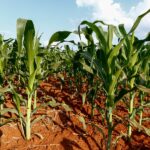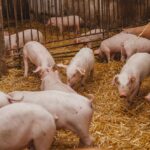Milking parlors and automated milking systems play crucial roles in modern dairy production by streamlining the milking process and improving efficiency. These technologies have revolutionized the industry, making it easier for farmers to manage larger herds and ensuring the well-being of the cows.
- Increased Efficiency: Milking parlors and automated milking systems are designed to optimize the milking process, reducing labor requirements and increasing overall efficiency. These systems can milk multiple cows simultaneously, allowing farmers to handle larger herds with ease. This saves time and resources, improving productivity and profitability.
- Cow Comfort and Welfare: Automated milking systems prioritize cow comfort and welfare. These systems are designed to mimic natural milking processes, providing a gentle and stress-free experience for the cows. Cows can voluntarily enter the system whenever they feel the need to be milked, eliminating the need for manual intervention and reducing stress for both the animals and the farmers.
- Data Collection and Monitoring: Modern milking parlors and automated milking systems are equipped with advanced sensors and monitoring technology. These systems collect data on milk yield, cow health, milk quality, and other parameters. This information enables farmers to closely monitor the health and productivity of their herd, detect early signs of diseases, and make informed management decisions.
- Hygiene and Milk Quality: Milking parlors and automated milking systems are designed to ensure excellent hygiene standards, thereby improving milk quality. The systems are equipped with automated cleaning and sanitization processes, reducing the risk of bacterial contamination. Automated milking systems can also detect abnormalities in milk, such as high somatic cell counts, which may indicate an infection in the cow’s udder, allowing for prompt action to be taken.
- Labor Savings and Flexibility: Milking parlors and automated milking systems reduce the manual labor required for milking. Farmers can allocate their time to other essential tasks, such as animal care, farm management, and business planning. Additionally, these systems provide flexibility by allowing farmers to schedule milking based on the cows’ natural behavior, rather than adhering to strict milking routines.
- Record-Keeping and Traceability: Automated milking systems generate comprehensive records of each cow’s milking history, including milk yield, milking frequency, and milk quality data. This information aids in record-keeping, performance evaluation, and meeting traceability requirements. It also helps in identifying cows with specific milking or health issues, allowing for targeted interventions.
Milking parlors and automated milking systems have transformed the dairy industry by improving efficiency, cow welfare, milk quality, and data management. These technologies have allowed farmers to manage larger herds effectively, enhance productivity, and ensure sustainable dairy production.
Join 'Farmers Mag' WhatsApp Channel
Get the latest Farming news and tips delivered straight to your WhatsApp
CLICK HERE TO JOIN






